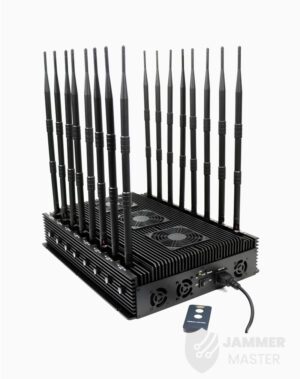
Buying Guide for Portable Signal Jammers
Key Takeaways Consideration Detail Product Weight Jammer Master’s portable jammers average 1.5Kg, significantly lighter than desktop models. Frequency Bands Capable of blocking multiple bands with
Free Worldwide Shipping & 1-Year Warranty!

With the advancement of science and technology, Signal Jammers have become increasingly familiar to everyone. These devices are being used more frequently during important exams such as the college entrance examination (gaokao) or various school assessments. However, the use of mobile phones during exams raises concerns about fairness. To ensure effective signal blocking, it is crucial to properly place and manage Signal Jammers in classrooms. This article will discuss the optimal placement and centralized control of these devices in educational settings.

Portable Cell Phone Jammer Block Cellular/WiFi/GPS/Walkie Talkie JM008
$659.99
Suitcase Style Signal Jammer Block Cellular/WiFi/GPS JM007
$2,659.99
Desktop 5G Cellular Signal Jammer Block Cellular/Wireless/GPS/LoJack JM006
$1,839.99
Full Band Desktop Signal Jammer Block Cellular/WiFi/GPS JM005
$1,365.99To achieve better signal blocking, Signal Jammers can be placed on chairs, desks, or directly on the floor, depending on the strength of the radio signals in the area. Placing them at the front and back of the classroom ensures better coverage. However, if it is challenging to protect the rear area of the classroom when only one jammer is used at the front, positioning it in the middle of the classroom can provide better results. This arrangement requires shorter signal-blocking lengths on both sides, enhancing the effectiveness of the jammer.
For long-term use of Signal Jammers in classrooms, it is essential to secure them properly. Firstly, they should be placed at a higher position, preferably 2.5m-3m or even higher. This height serves two purposes: better signal blocking and prevention of potential damage caused by mischievous students. Placing the jammer in the middle position at the back of the classroom is ideal.
In cases where multiple Signal Jammers are required, it is advisable to have a unified switch. The circuitry of each jammer in every classroom should be interconnected. By having the school control the activation and deactivation of the jammers, it saves time and effort. This centralized control system eliminates the need for individuals to manually operate the jammers in each classroom, avoiding unnecessary inconvenience.
The proper placement and management of Signal Jammers in educational settings are crucial to ensure fair and secure exam environments. By strategically positioning the jammers and implementing centralized control systems, schools can effectively block wireless signals during exams, maintaining the integrity of the assessment process. These measures contribute to a level playing field for all students and promote a fair educational environment.
Our frequency checker tool will help you check all frequency bands used in all country.

Key Takeaways Consideration Detail Product Weight Jammer Master’s portable jammers average 1.5Kg, significantly lighter than desktop models. Frequency Bands Capable of blocking multiple bands with

In an age where the sky is dotted with drones, the importance of drone jammers has never been more significant. From commercial deliveries to personal

Protect your vehicle’s location privacy with a professional guide on GPS jammers. From selection to legal considerations and installation tips, we’ve got you covered. Key

Understanding Signal Blocker: How It Works and Its Applications Signal Blockers are devices that can disrupt mobile phone signals, preventing them from connecting to base

The Application and Benefits of High-Power Signal Jammers Enhancing Signal Blocking Efficiency in Various Environments In today’s technologically advanced world, the need for effective signal

Considerations for Purchasing Exam Room Signal Jammers Ensuring Effective Signal Jamming for Exam Integrity As the year approaches its end, many schools are preparing for

The Importance of Monitoring and Signal Interference Measures During Examinations During examination periods, it is crucial to closely monitor the examination venues and their surrounding

Selecting the Appropriate Cell Phone Jammer for Theaters and Auditoriums Overcoming Challenges in Installation and Maximizing Signal Disruption The Importance of Cell Phone Jamming in

Remote Control of Cell Phone Jammers via Smartphone: A Possibility? With the rapid development of the Internet of Things (IoT), numerous smart home devices have